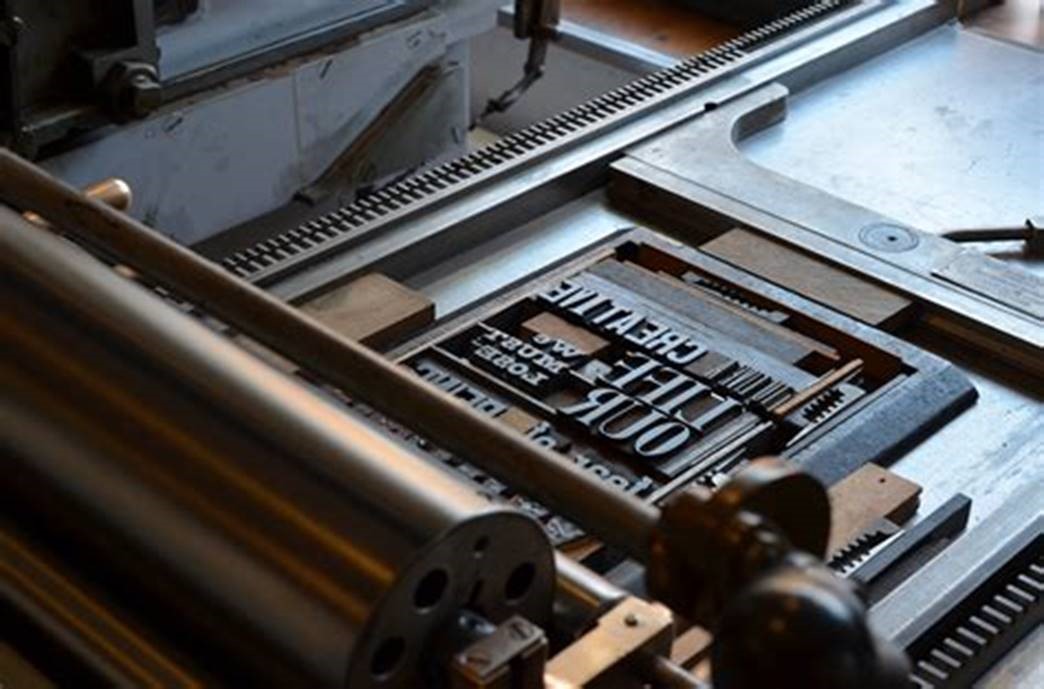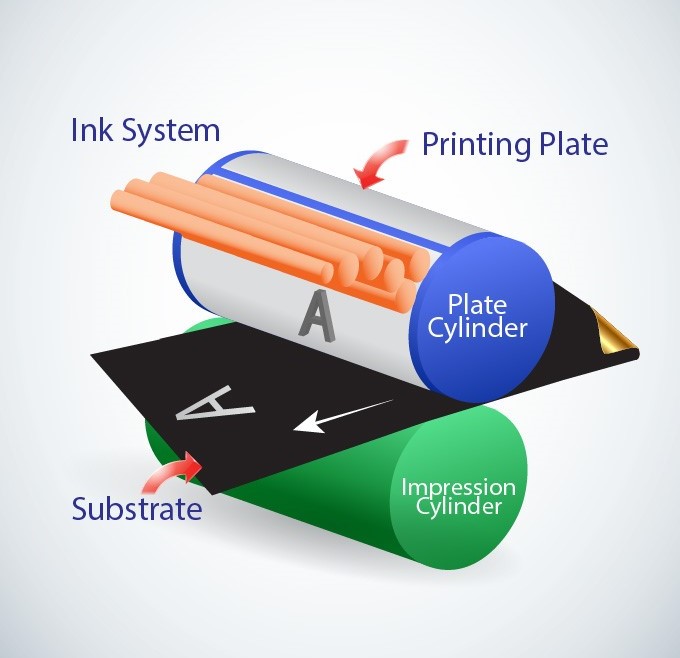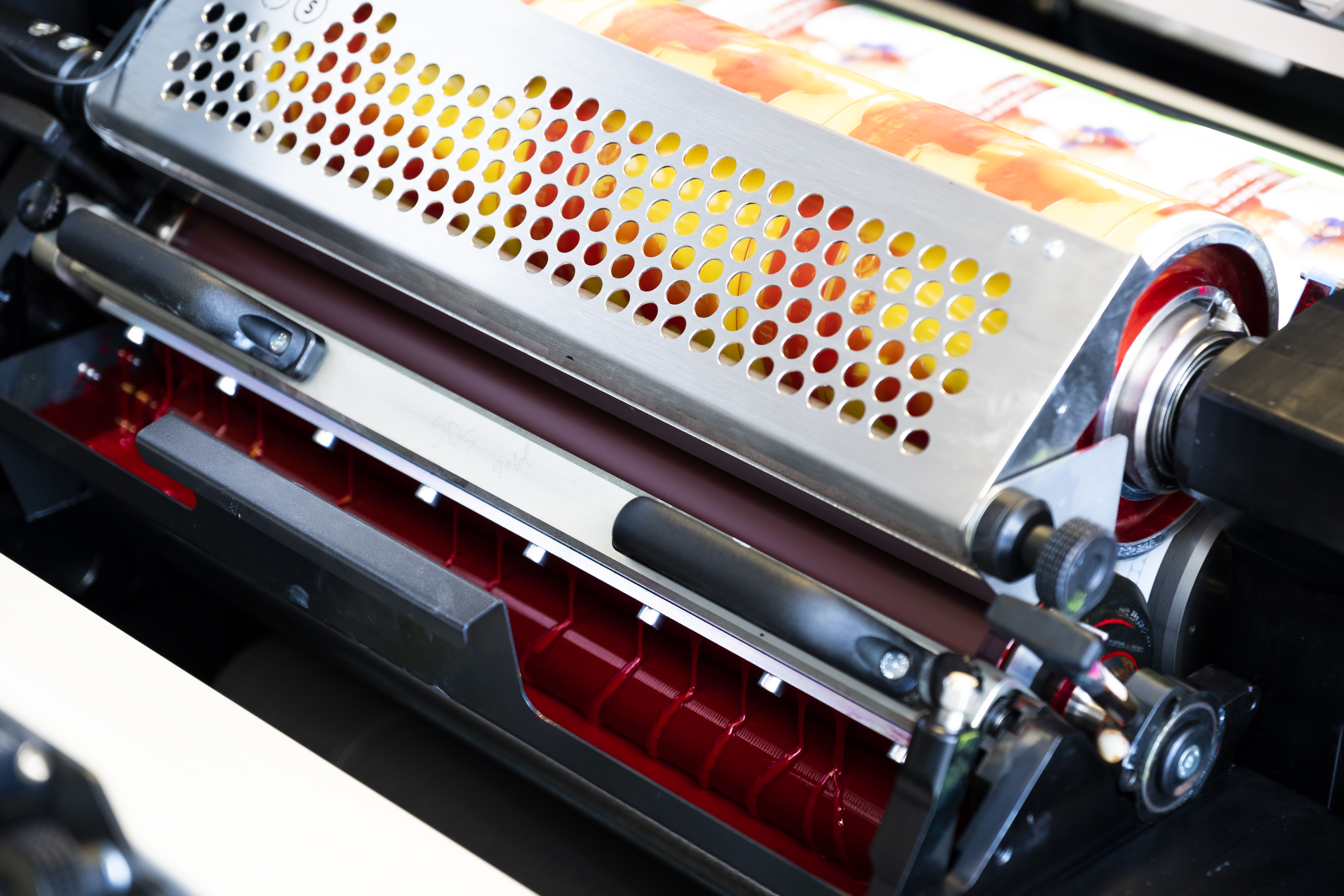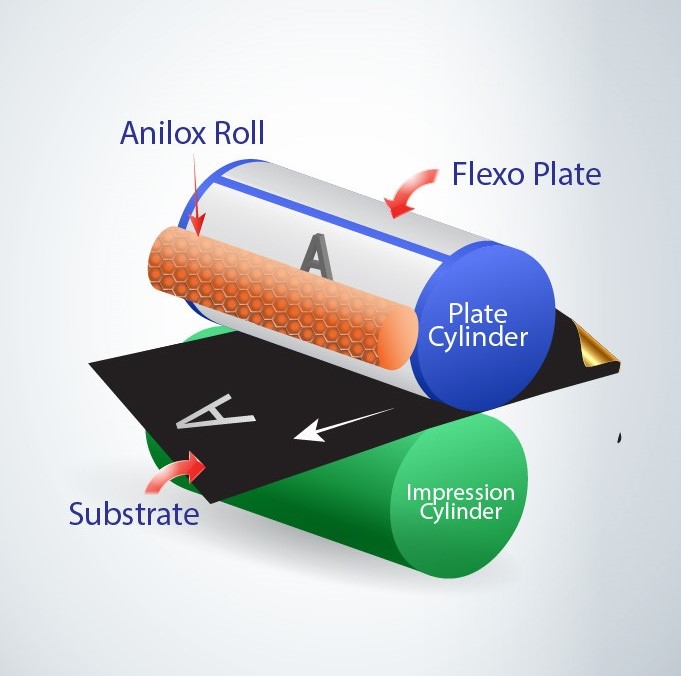When deciding what printing technology is best for your company for label printing, letterpress or flexographic are often considered.
Since every printing job has a unique set of requirements, choosing which printing technology to use can be challenging. To assist with your decision process, allow me to explain how letterpress and flexo printing works and the pros and cons of each technology.
Let’s start with the oldest technology first.
Letterpress printing
Letterpress printing is a relief printing process that initially used raised metal type and engravings to imprint words and designs on a page. It originated in the 1400s and was the primary form of printing for over 500 years.
The letterpress print plates are inked over an ink roller set and controlled via ink-key settings. The image is transferred directly from the plate to the substrate using pressure.
Graphics are built using dots—the smaller the dots, the lighter the color; the larger and closer the dots are, the darker the color.
 The classic letterpress technology
The classic letterpress technology
The pros and cons of letterpress
Pros:
- Low tooling costs
- Fast change-overs
- Print quality comparable with digital
- Ideal for small jobs
- Can process different types of labels and more diversified or personalized jobs
 Cons:
Cons:
- A slower process
- Application of color is limited
- Printing costs considerably more than flexo printing
- Dependent in expertise of operator
Flexographic printing
Flexography is a relief or raised image printing process using the same principle as letterpress. A flexible rubber or photopolymer plate is mounted onto the plate cylinder. The plate image is inked with a liquid ink, which is transferred from the anilox roller, direct to the surface of the image area and then printed onto the substrate, using a very light controlled pressure (impression).

The pros and cons of flexo
Pros:
- Short set-up times
- In-line finishing
- Minimum waste
- Less complex printing process for the operator
- Medium to long print runs
- Fast production speeds
- Accommodates a variety of ink types
- Low operational cost
- Robust machines and long-lasting parts
 Cons:
Cons:
- Not ideal for short-run production
- Set-up time can be long depending on the number of colors and complexity of print run
- The price of flexo printing plates is relatively high compared to other types of plates
The final decision
Whether letterpress or flexo is the better option for your company completely depends on your type of business and customer orders. As explained, there are pros and cons for both technologies.
And of course, there are more options than just letterpress and flexo. But that’s a discussion for another time.
Would you like to know more details about what to consider when choosing between letterpress or flexo technology?
Download our free white paper:
‘Letterpress versus flexo printing: how to choose the best option for your business’